Average Payout For T-Bone Accident in Texas
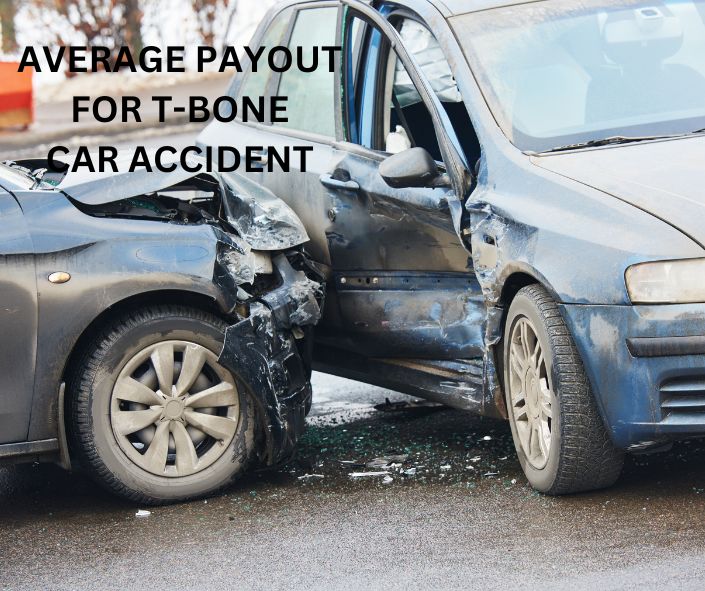
Author: 30klife January 18, 2024
T-bone accidents, commonly occurring at intersections, are among the most dangerous types of vehicle collisions. Characterized by the front of one vehicle colliding with the side of another, they often result in significant injuries and substantial vehicle damage. Understanding the financial implications and the average payouts for such accidents is crucial for anyone who has been involved in a T-bone collision. This post aims to shed light on the factors that influence compensation amounts and to provide a guide for what victims might expect in terms of settlement.
Nature of T-Bone Accidents
A T-bone accident typically happens when one vehicle fails to yield at an intersection, crashing into the side of another. This can be due to various reasons, including distracted driving, speeding, or running a red light. Injuries in these accidents can be severe due to the limited protection provided by the side of a vehicle, often leading to head, neck, and spinal injuries, as well as broken bones and internal injuries.
What sets T-bone accidents apart from other types is the high potential for serious injury. The side of a vehicle offers less protection than the front or rear, making occupants more vulnerable to the impact. Understanding the nature of these accidents is crucial in appreciating why settlements can be substantial, especially in cases of severe injury.
Factors Influencing Payout Amounts
The payout in a T-bone accident is influenced by several factors. The severity of the injury is paramount; more serious injuries typically result in higher compensation. Vehicle damage is also a key consideration, as it can indicate the collision’s severity and contribute to the overall claim.
Determining fault is crucial in T-bone accidents. Texas, like many states, follows a modified comparative negligence rule, meaning your compensation may be reduced if you are found partially at fault. It’s important to collect and preserve evidence from the accident scene, such as photographs, witness statements, and police reports, as this can significantly affect the determination of fault and, consequently, the payout.
Calculating Damages in T-Bone Accidents
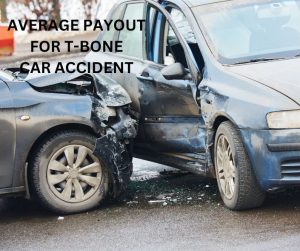 Damages in a T-bone accident claim can be divided into economic and non-economic categories. Economic damages include quantifiable losses like medical expenses, lost wages, and property damage. Non-economic damages cover pain and suffering, emotional distress, and loss of enjoyment of life.
Damages in a T-bone accident claim can be divided into economic and non-economic categories. Economic damages include quantifiable losses like medical expenses, lost wages, and property damage. Non-economic damages cover pain and suffering, emotional distress, and loss of enjoyment of life.
Future medical expenses can and should be included if your injuries require ongoing treatment. To accurately calculate these costs, it may be necessary to consult with medical professionals. Keeping detailed records of all your expenses and how your injury impacts your income is crucial in ensuring you receive fair compensation.
Average Payouts: Expectations and Realities
You may want to maximize your settlement for a lower back claim. The average payout for T-bone accidents varies significantly based on the above factors. While minor injuries with little to no fault may result in smaller settlements, severe injuries with clear liability can lead to substantial payouts, sometimes reaching into six or even seven figures.
It’s important to consult with a personal injury attorney to get a realistic estimate of your potential payout. An attorney can evaluate the specifics of your case and compare it with similar cases to provide a more tailored estimate.
The Role of Legal Assistance in Maximizing Payout
Having a skilled attorney can be critical in T-bone accident claims. They can handle negotiations with insurance companies, which often initially offer lower settlements than the claim may be worth. An experienced attorney understands the nuances of such cases and can effectively argue for a fair settlement that covers all your damages.
The necessity of hiring a lawyer depends on the complexity of your case. For straightforward claims with minor injuries, you might manage without legal representation. However, in cases of serious injury or disputed liability, professional legal assistance can be invaluable.
Case Studies and Real-Life Examples
Examining real-life examples of T-bone accident settlements can provide valuable insights. For instance, cases with severe injuries like spinal damage or traumatic brain injuries often result in higher settlements due to the significant impact on the victim’s life. Some people might even be scared to drive after a car accident.
Comparing your case to these examples can help set realistic expectations. Keep in mind, though, that each case is unique, and factors like insurance policy limits and the specific circumstances of the accident play a significant role.
Preparing for the Settlement Process
Preparing for settlement negotiations involves gathering all relevant documentation, including medical records, repair estimates for your vehicle, proof of lost wages, and any evidence related to the accident. Being well-prepared can strengthen your position during negotiations.
It’s also essential to approach settlement discussions with realistic expectations. Understanding the value of your claim and the legal principles at play can help you make informed decisions throughout the process.
T-Bone Car Accident Attorney Near Me
While the average payout for T-bone car accidents can vary widely, understanding the factors that influence these settlements is crucial. From the severity of injuries and the determination of fault to the role of legal representation, each aspect plays a critical part in shaping the outcome of your claim. For anyone involved in a T-bone accident, seeking professional advice and preparing thoroughly for the settlement process are key steps towards securing fair compensation.
T-Bone Car Accident Attorney FAQ
Is T-Bone the worst car accident?
Determining whether a T-bone accident (also known as a side-impact collision) is the “worst” type of accident can be subjective and depends on various factors, including the severity of the impact, the speed of the vehicles involved, and the safety features of the vehicles. While T-bone accidents can be extremely dangerous and often result in serious injuries or fatalities, other types of accidents can also be equally or more severe under certain circumstances.
Here are some considerations regarding T-bone accidents and their severity:
- Vulnerability in Side-Impacts: In a T-bone accident, the side of a vehicle is impacted, which typically offers less protection than the front or rear. This can result in more severe injuries to passengers, especially if the vehicle lacks side airbags or has weaker side-impact protection.
- Injury Severity: T-bone accidents are notorious for causing significant injuries such as broken bones, head and spinal injuries, and internal injuries. The risk of injury is often higher if the impact occurs on the passenger side where there is less distance between the occupant and the point of impact.
- Comparisons with Other Accident Types: While T-bone accidents are dangerous, other types of accidents can also be extremely severe. Head-on collisions, for example, often result in very serious injuries or fatalities due to the high speeds and direct impact involved. Rollover accidents are also particularly dangerous, as they can lead to occupants being ejected from the vehicle or crushed.
- Circumstantial Factors: The severity of any car accident, including T-bones, depends greatly on circumstantial factors such as vehicle speed, location of impact, safety features of the vehicles involved, and whether occupants are wearing seat belts.
- Statistical Data: According to traffic safety data, T-bone accidents are among the most dangerous types of collisions, particularly at high-speed intersections. However, the fatality and severe injury rates in different types of accidents can vary based on the factors mentioned above.
In summary, while T-bone accidents are certainly among the most dangerous types of vehicle collisions, the designation of any accident type as the “worst” depends on specific circumstances, including the conditions of the crash and the safety features of the vehicles involved. All types of vehicle accidents have the potential to be severe and life-threatening.
What is the average payout for a T-bone injury claim in Houston, Texas?
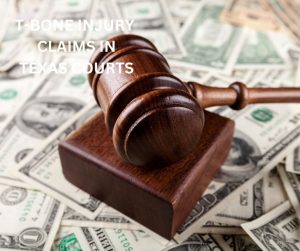 As of my last update in April 2023, providing an exact average payout for a T-bone injury claim in Houston, Texas, is challenging due to the variability of individual cases. Settlements and awards in personal injury cases, including those from T-bone car accidents, depend on a multitude of factors. However, I can outline the aspects that typically influence these payouts:
As of my last update in April 2023, providing an exact average payout for a T-bone injury claim in Houston, Texas, is challenging due to the variability of individual cases. Settlements and awards in personal injury cases, including those from T-bone car accidents, depend on a multitude of factors. However, I can outline the aspects that typically influence these payouts:
- Severity of Injuries: The extent of the injuries sustained plays a significant role in determining the settlement amount. More serious injuries that require extensive medical treatment, result in long-term disability, or significantly impact the victim’s quality of life typically lead to higher payouts.
- Medical Expenses: This includes all medical costs related to the accident — from emergency care and hospitalization to rehabilitation and future medical needs.
- Lost Wages and Earning Capacity: If the injury has led to time off work or has affected the victim’s ability to earn a living in the future, this loss of income is factored into the settlement.
- Pain and Suffering: Compensation for pain and suffering reflects the physical pain and emotional trauma caused by the accident. This is often the most subjective component and can vary greatly. See also…Pre-Existing Conditions Aggravated by Car Accident.
- Vehicle Damage: The cost of repairing or replacing a vehicle also contributes to the claim’s value.
- Liability and Comparative Negligence: Texas follows a modified comparative negligence rule. If the injured party is found to be partially at fault, their compensation can be reduced accordingly. The degree of fault assigned to each party involved can significantly impact the settlement amount.
- Insurance Policy Limits: The at-fault party’s insurance coverage limits can also be a factor, as these limits may cap the maximum payout amount.
Given these variables, T-bone accident settlements in Houston can range widely. Minor injury cases might settle for a few thousand dollars, while cases involving severe injuries can reach into the tens or hundreds of thousands, and in particularly devastating cases, even more.
To get a more accurate estimate of what a T-bone injury claim might be worth in Houston, it’s advisable to consult with a personal injury attorney experienced in Texas car accident claims. They can assess the specifics of the case, including reviewing medical records, calculating total losses, and considering the nuances of Texas law, to provide a tailored estimate. Legal representation is often key in ensuring that victims receive fair compensation that accurately reflects the full extent of their losses and suffering. Don’t forget about the statute of limitations on car accident injuries (contact your lawyer).
How do you calculate pain and suffering damages in Texas?
 Calculating pain and suffering in Texas, as in many other jurisdictions, is a subjective process without a strict mathematical formula. However, attorneys and insurance companies typically use common methods as a starting point for these calculations. Here’s an overview of how pain and suffering might be calculated in a personal injury case in Texas:
Calculating pain and suffering in Texas, as in many other jurisdictions, is a subjective process without a strict mathematical formula. However, attorneys and insurance companies typically use common methods as a starting point for these calculations. Here’s an overview of how pain and suffering might be calculated in a personal injury case in Texas:
- Multiplier Method: This is the most commonly used method for calculating pain and suffering. It involves multiplying the total of your economic damages (like medical bills and lost wages) by a certain number (the multiplier), which usually ranges from 1.5 to 5. The multiplier is determined based on factors like the severity and duration of your pain, the invasiveness and length of your medical treatment, any long-term repercussions, and the impact on your daily life. More severe and life-altering injuries will typically result in a higher multiplier.
- Per Diem Approach: This method assigns a certain dollar amount to every day (or week) that you experience pain and suffering, from the date of the injury until you reach maximum medical improvement. The daily rate could be based on a real figure, like your daily wage, suggesting that your pain and suffering are worth at least what you would earn in a day.
- Consideration of Specific Factors: In Texas, like elsewhere, the calculation of pain and suffering will consider factors such as:
- The nature and extent of the injuries.
- The amount of medical treatment required and its duration.
- Long-term impacts of the injuries (e.g., chronic pain, disabilities).
- The effect of injuries on the victim’s lifestyle and emotional well-being.
- Use of Precedents and Jurisdictional Limits: Attorneys may also look at settlements and jury awards in similar cases to gauge an appropriate range for pain and suffering compensation. Texas law may have specific caps or limits on non-economic damages in certain types of cases, such as medical malpractice claims.
- Negotiation and Legal Representation: Ultimately, the calculation of pain and suffering is often a matter of negotiation. An experienced personal injury attorney can be crucial in arguing for a fair amount. They can leverage their knowledge, experience, and understanding of similar cases to justify the chosen multiplier or per diem rate.
It’s important to remember that each personal injury case is unique, and the calculation of pain and suffering will vary based on the specific circumstances of the case. Therefore, consulting with a qualified attorney in Texas is advisable to get a more accurate assessment of the potential value of pain and suffering in your particular case.
Is there a cap on pain and suffering in Texas?
Yes, Texas does have caps on pain and suffering damages, but these caps apply specifically to certain types of cases. The most notable caps are in medical malpractice cases. It’s important to understand how these caps work and in what situations they apply:
- Medical Malpractice Cases: In Texas, there is a cap on non-economic damages in medical malpractice cases. As of my last update in April 2023, these caps are as follows:
- $250,000 cap on non-economic damages (like pain and suffering) against a single healthcare provider or physician.
- $250,000 cap on non-economic damages for each hospital or healthcare institution involved, with a maximum of $500,000. This means the total cap from all healthcare institutions can’t exceed $500,000.
- Therefore, the total cap from all defendants (healthcare providers and institutions combined) in a medical malpractice case is $750,000.
- Other Personal Injury Cases: For other types of personal injury cases in Texas, such as those involving car accidents, slip and fall incidents, or product liability, there are no statutory caps on pain and suffering damages. The compensation for non-economic damages like pain and suffering is typically determined based on the specifics of the case and through negotiation or court judgment.
- Punitive Damages: Separate from pain and suffering, Texas also caps punitive damages, which are awarded in cases of gross negligence or malicious intent. These caps are generally set at the greater of $200,000 or two times the amount of economic damages plus an equal amount of non-economic damages up to $750,000.
It’s important to note that laws and legal interpretations can change, and the application of these caps can be complex. For the most current and applicable legal advice, especially if you are involved in a personal injury case in Texas, it’s advisable to consult with a qualified attorney. They can provide detailed information on how these caps might affect your case and help in navigating the legal process for optimal compensation.

 Damages in a T-bone accident claim can be divided into economic and non-economic categories. Economic damages include quantifiable losses like medical expenses, lost wages, and property damage. Non-economic damages cover pain and suffering, emotional distress, and loss of enjoyment of life.
Damages in a T-bone accident claim can be divided into economic and non-economic categories. Economic damages include quantifiable losses like medical expenses, lost wages, and property damage. Non-economic damages cover pain and suffering, emotional distress, and loss of enjoyment of life.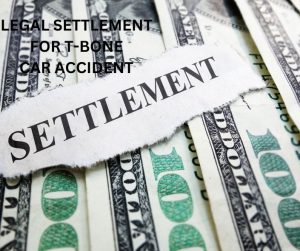

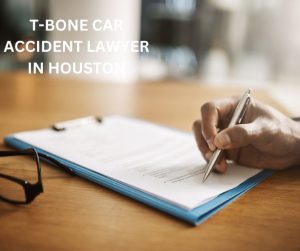
 As of my last update in April 2023, providing an exact average payout for a T-bone injury claim in Houston, Texas, is challenging due to the variability of individual cases. Settlements and awards in personal injury cases, including those from T-bone car accidents, depend on a multitude of factors. However, I can outline the aspects that typically influence these payouts:
As of my last update in April 2023, providing an exact average payout for a T-bone injury claim in Houston, Texas, is challenging due to the variability of individual cases. Settlements and awards in personal injury cases, including those from T-bone car accidents, depend on a multitude of factors. However, I can outline the aspects that typically influence these payouts: Calculating pain and suffering in Texas, as in many other jurisdictions, is a subjective process without a strict mathematical formula. However, attorneys and insurance companies typically use common methods as a starting point for these calculations. Here’s an overview of how pain and suffering might be calculated in a personal injury case in Texas:
Calculating pain and suffering in Texas, as in many other jurisdictions, is a subjective process without a strict mathematical formula. However, attorneys and insurance companies typically use common methods as a starting point for these calculations. Here’s an overview of how pain and suffering might be calculated in a personal injury case in Texas: